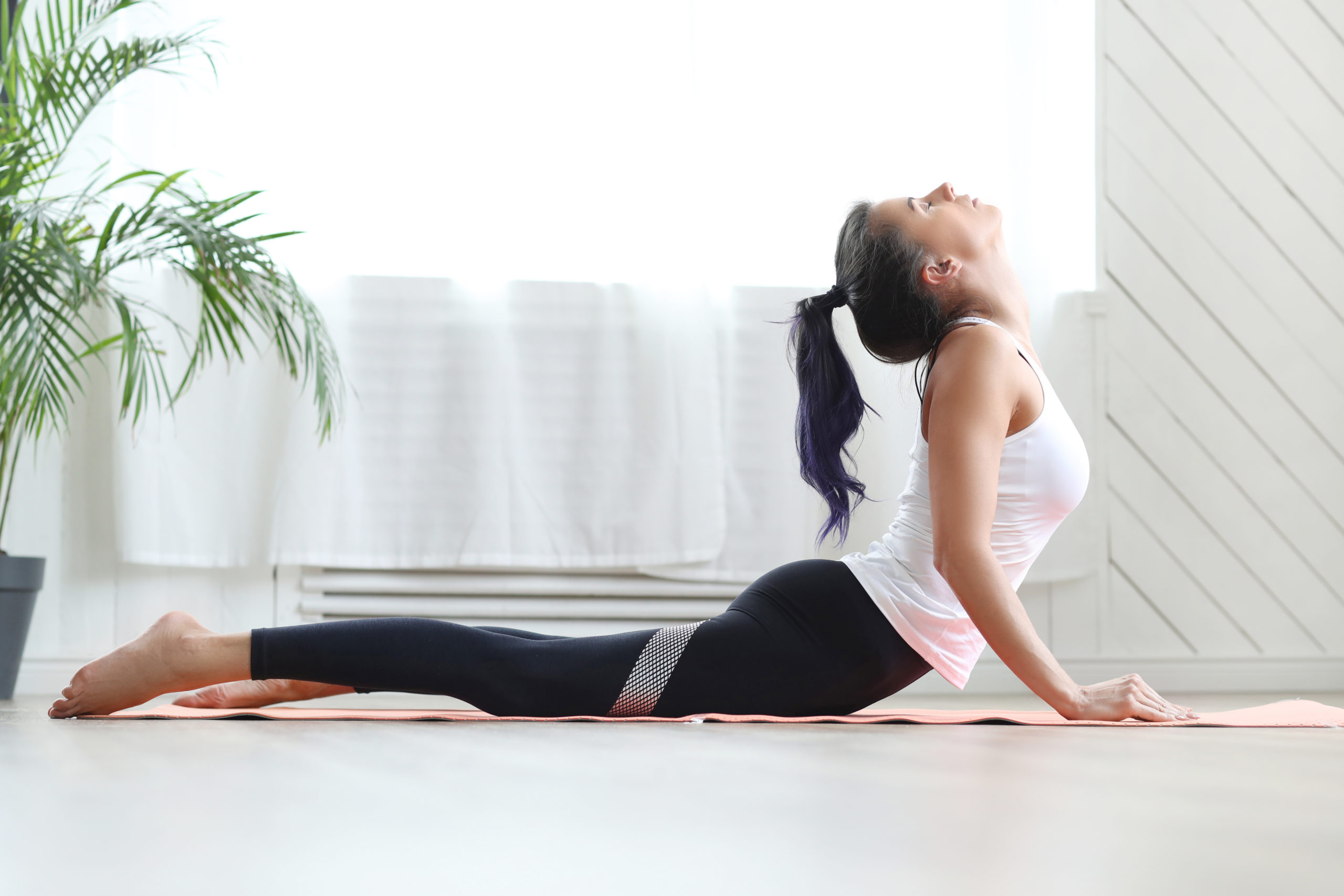
Hello there! If you’ve landed here, you’re likely dealing with some persistent lower back pain, and you’re curious about how yoga might help. Whether your discomfort stems from sitting at your desk for too long, lifting something improperly, or just the wear and tear of daily life, it can seriously affect your mood and mobility. But here’s the good news: yoga offers an excellent, natural way to alleviate that pain, and I’m here to walk you through it.
Why Yoga Is Essential for Lower Back Health
Let’s dive into why yoga is such a powerful tool for managing lower back pain. Your lower back, or lumbar spine, supports much of your body’s weight, and it’s involved in nearly every movement you make. When this area becomes tight or weak, it can lead to pain and discomfort. The beauty of yoga lies in its ability to both stretch and strengthen the muscles around the lumbar spine, thereby improving flexibility and stability.
The Role of Key Muscle Groups
Several muscle groups play a crucial role in supporting the lower back, including the erector spinae (which run along your spine and help maintain posture), the quadratus lumborum (a deep muscle in the lower back that stabilizes the spine and pelvis), and the gluteal muscles (which provide power and support to your lower body movements). When these muscles are strong and flexible, they help maintain the alignment of the spine and pelvis, reducing the likelihood of pain.
Yoga specifically targets these muscles, enhancing both their flexibility and strength. And the best part? You don’t need to be an expert to start reaping the benefits. If you’re new to yoga, you might find our Get Your Yoga On guide useful—it’s packed with tips to help you begin your practice with confidence.
Common Causes of Lower Back Pain
Before we get into the yoga poses, it’s helpful to understand some common causes of lower back pain. Poor posture, especially when sitting for long periods, can lead to imbalances in the muscles and spine. Weak core muscles—including the transversus abdominis, multifidus, and obliques—can also contribute to pain, as they fail to provide adequate support for the lower back. Additionally, stress and tension often manifest physically in the lower back, exacerbating discomfort.
When you engage in yoga, you’re not only stretching and strengthening your body; you’re also cultivating greater awareness of your posture and movements. This mindfulness helps you correct imbalances before they become problematic. Stress relief, which is a key benefit of yoga, also plays a significant role in managing lower back pain. For those who spend a lot of time at a desk, incorporating Stress Relief Yoga Poses for Office Workers into your routine can make a huge difference.
Yoga Poses to Strengthen and Stretch Your Lower Back
Now that you understand the anatomy and causes of lower back pain, let’s look at some specific yoga poses that can help. These poses are designed to stretch tight muscles, strengthen weak areas, and promote spinal alignment. Practising them regularly can bring significant relief and improve your overall back health.
Cat-Cow Pose (Marjaryasana-Bitilasana)
The Cat-Cow Pose is a gentle way to warm up the spine, making it more flexible and reducing tension in the muscles that run along your back.
- How to perform Cat-Cow:
- Start on your hands and knees, with your wrists aligned under your shoulders and your knees under your hips. Your spine should be in a neutral position.
- Inhale as you drop your belly towards the floor, arching your back (extending your thoracic and lumbar spine) and lifting your head and tailbone (this is Cow Pose).
- Exhale as you round your back (flexing the spine), tucking your chin towards your chest and pulling your navel towards your spine (this is Cat Pose).
- Repeat this flow for 5-10 rounds, moving with your breath.
This movement not only stretches the erector spinae muscles along the spine but also mobilizes the vertebrae, enhancing spinal flexibility and reducing stiffness.
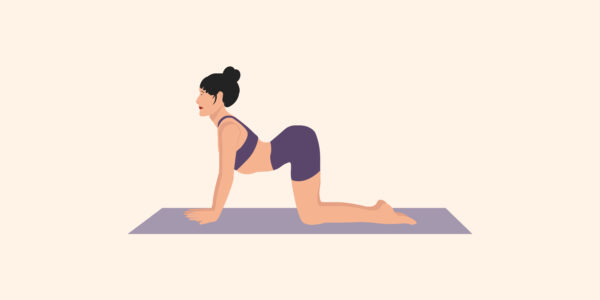
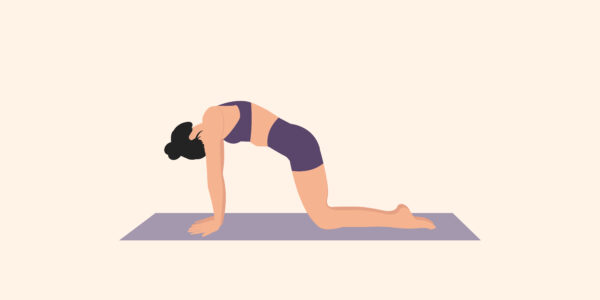
Child’s Pose (Balasana)
Child’s Pose is a restorative position that gently stretches the lower back, hips, and thighs while calming the nervous system.
- How to do Child’s Pose:
- Begin on your hands and knees, then bring your big toes together and sit back on your heels, spreading your knees apart.
- Lower your torso between your thighs and extend your arms forward, resting your forehead on the mat.
- Breathe deeply, allowing your back muscles, particularly the quadratus lumborum, to relax with each exhale. Hold for at least 1-2 minutes.
This pose stretches the quadratus lumborum and the muscles of the lower back, which can become tight from prolonged sitting or standing.
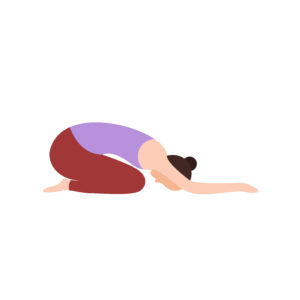
Bridge Pose (Setu Bandhasana)
Bridge Pose is excellent for strengthening the muscles of the lower back, gluteus maximus, and hamstrings. It also helps to open up the chest and spine, which can become tight from poor posture.
- How to practise Bridge Pose:
- Lie on your back with your knees bent and feet flat on the floor, hip-width apart. Your arms should be by your sides with your palms facing down.
- Press your feet into the ground as you lift your hips towards the ceiling, squeezing your gluteal muscles and engaging your core, specifically the transversus abdominis.
- Hold the pose for 5-10 breaths, then slowly lower your hips back to the floor. Repeat 2-3 times.
This pose activates the gluteus maximus and hamstrings while strengthening the lumbar spine’s stabilising muscles, such as the multifidus.
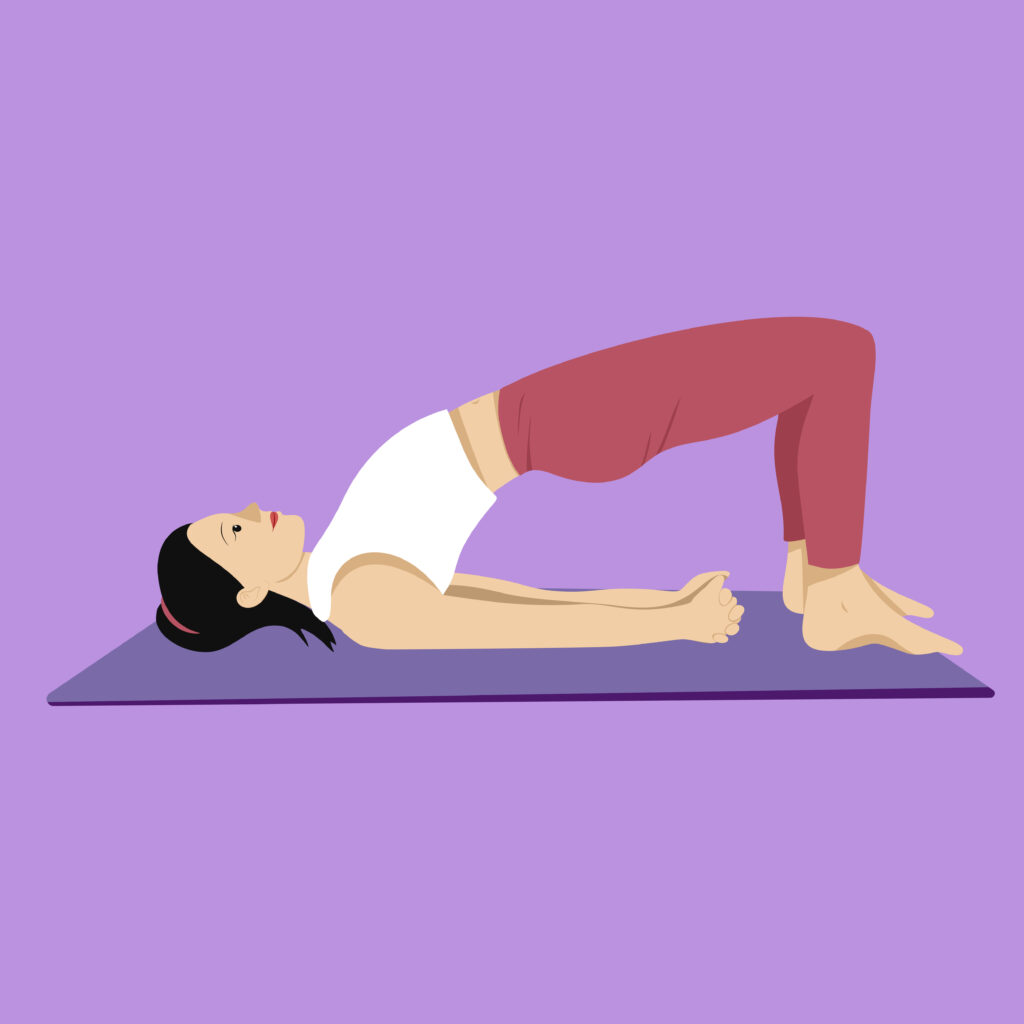
Research from sources like the Mayo Clinic has consistently shown that yoga is an effective way to manage and reduce lower back pain. By incorporating these poses into your routine, you’re not only addressing the symptoms but also tackling the root causes of discomfort.
Give It a Try: 10-Days Free and 15% Off!
Ready to take the next step? At Alaya Yoga, we’re passionate about helping you find relief from lower back pain through mindful movement and expert guidance. We’re offering a 10-day free trial that gives you unlimited access to our yoga classes, including those specifically designed to support your back health.
And here’s something extra to sweeten the deal: Sign up today, and you’ll receive 15% off your first month’s membership. It’s our way of welcoming you to the Alaya Yoga community and supporting your journey to better health.
A Few Expert Tips Before You Begin
As you start your yoga practice, here are some tips from our experts to keep in mind:
- Honour Your Body’s Limits: Yoga is about listening to your body. If a pose feels uncomfortable or causes pain, modify it or try a different pose. The goal is to find relief, not to push through pain.
- Consistency Over Intensity: You don’t need to practise for hours each day to see benefits. Even 10-15 minutes of focused practice a few times a week can make a significant difference.
- Focus on Alignment: Proper alignment is crucial in yoga to prevent injury and ensure you’re working the right muscles. Don’t hesitate to use props like blocks or straps if they help you maintain alignment.
- Breathe Deeply: Deep, controlled breathing not only enhances your physical practice but also calms your nervous system, reducing stress and tension that can contribute to back pain.
Wrapping It Up
Lower back pain can be a real challenge, but yoga offers a gentle, effective way to manage and reduce that discomfort. By incorporating these expert-recommended poses into your routine, you’ll not only ease your pain but also build a stronger, more resilient back. At Alaya Yoga, we’re here to guide you every step of the way. Don’t miss out on our 10-day free trial and 15% off offer—your back will thank you for it!